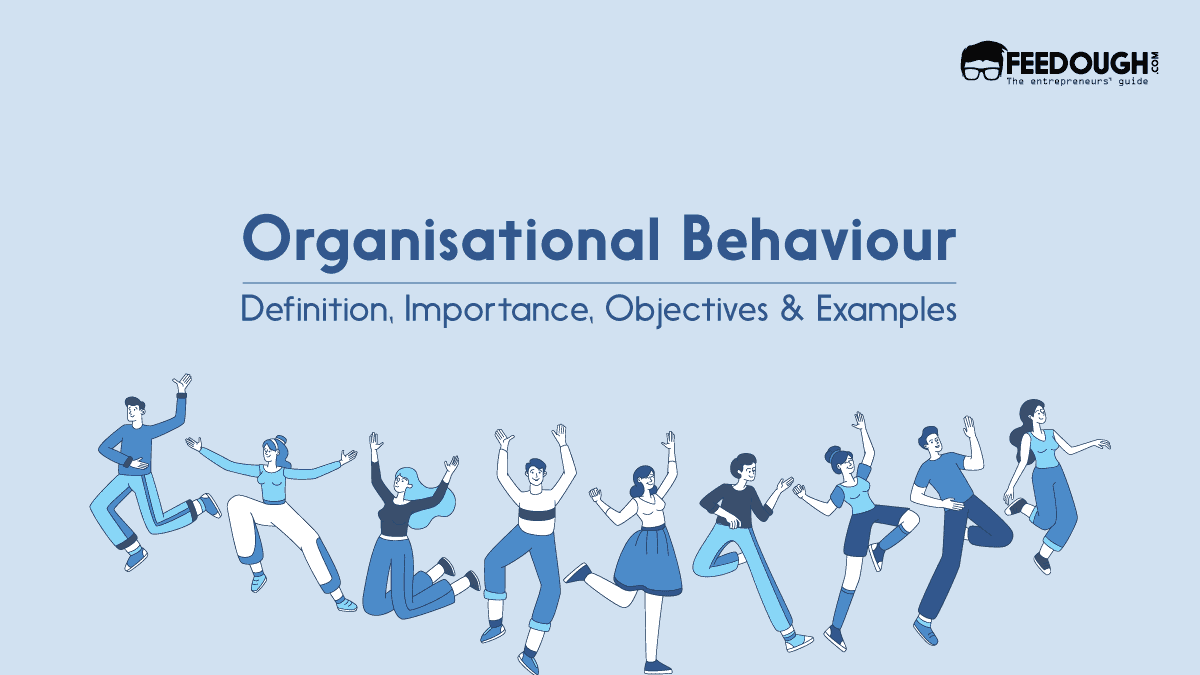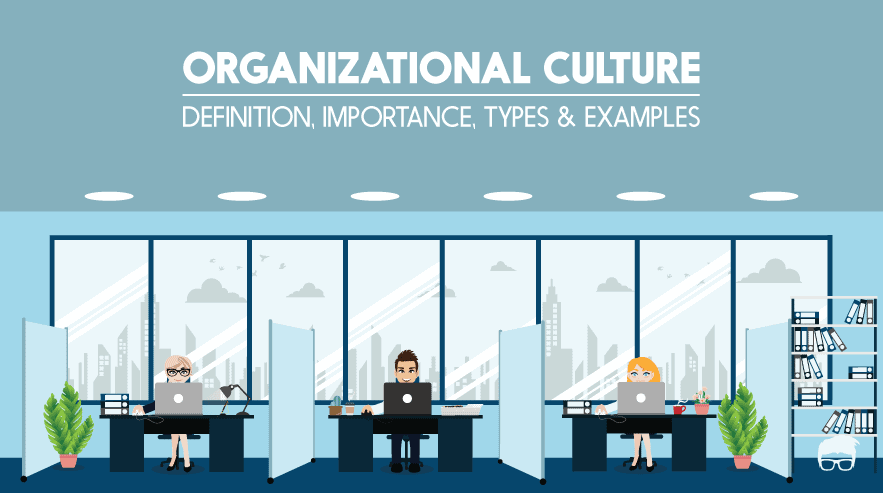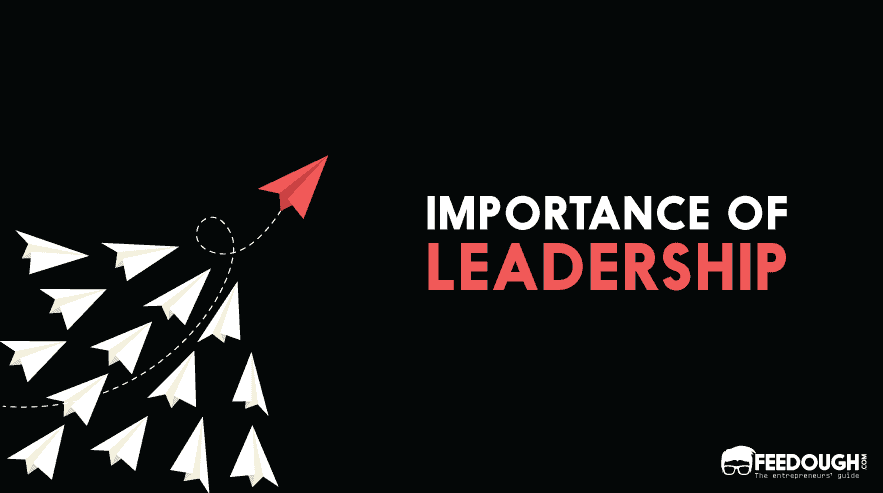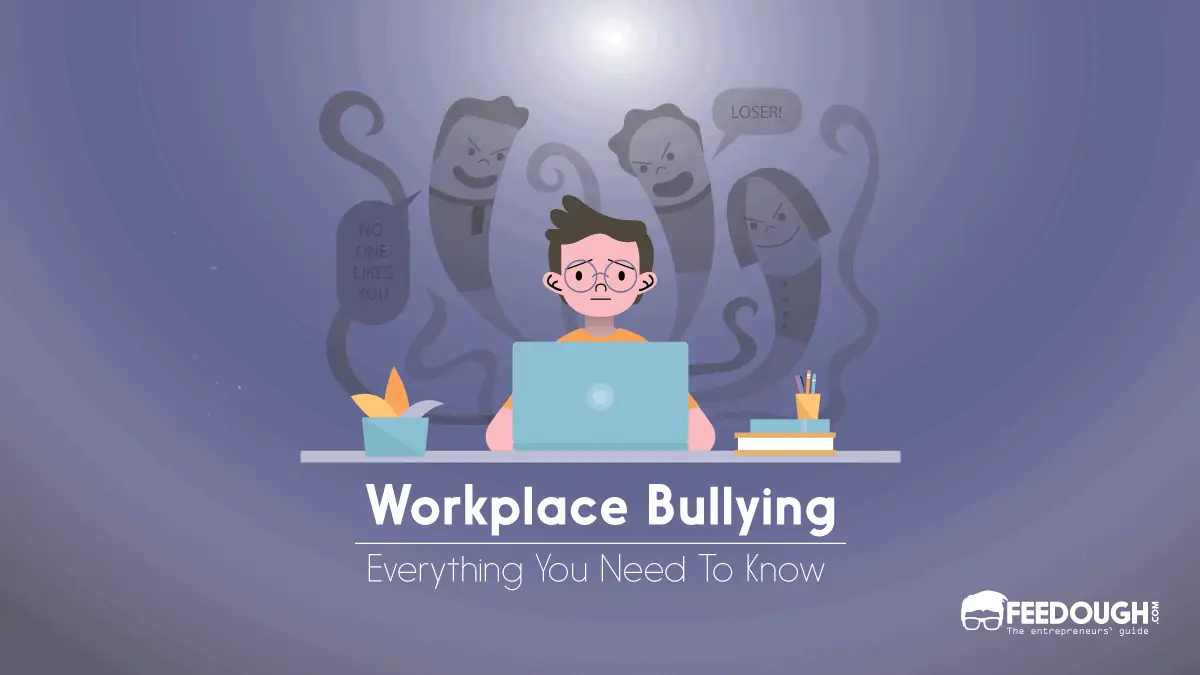Modern businesses are diverse and bring together people from various social and economic backgrounds. They are also characterised by varied workforces. Some of these employees may come from different cultures, ethnicities and nationalities.
Therefore it is essential to understand the behavioural patterns of the employees and how they affect the functioning of the organisation, and this is where organisational behaviour comes in.
What Is Organisational Behaviour?
Organisational behaviour is the study of individual and group behaviour in the workplace and their impact on productivity and profitability.
In simple words, organisational behaviour:
- Studies individual and group human behaviour: Organisational behaviour closely analyses the personal characteristics, education history, economic and cultural background etc., of an individual to determine their behaviour in specific situations. It aims to get a grasp of the intellectual and emotional quotient of people to understand their reactions.
- Studies the behaviour within an organisation: Organisational behaviour studies how employees interact with each other while working and how people’s attributes influence their work environment behaviour within an organisation. It digs deeper into an individual’s social position and monitors their behavioural patterns while working with a group of people.
- Studies human behaviour’s impact on productivity and productivity: Organisational behaviour studies the impact of personality traits, culture, education, background, etc., of the organisation’s employees on the productivity of the organisation. It also studies how organisations influence behavioural patterns of employees to bring about a change in people’s attitudes, values, and behaviours for an increase in organisational productivity.
The Three Levels Of Organisational Behaviour
OB focuses on studying three key levels of human behaviour within an organisation. These levels are:
- Individual Level: This level of organisational behaviour focuses on studying employees’ values, attitudes, perceptions and personal traits to determine their behavioural patterns in the workplace. Human psychology forms the basis of individual-level analysis.
- Group Level: The group-level or team-level analysis studies the behaviour of employees while working in groups. Factors like communication, leadership, initiative, group dynamics, conflicts, power etc., are studied at this level. It determines how people individually and collectively interact in a group. Sociology and social psychology form the basis of team-level analysis.
- Organisation-level: This level deals with analysing the organisational structure, culture and climate within an organisation. It studies how organisations differ based on their organisational structure, work environment, human resource policies etc. Sociology and political science form the basis of organisation system-level analysis.
The Elements Of Organisational Behaviour
The key elements of organisational behaviour include people, structure, technology, and the environment.
- People: They form the internal and social system of the organisation. People include the employees, the organisation’s stakeholders (those affected by the actions of an organisation), and groups. The groups can be big or small, formal or informal, official or unofficial.
- Structure: It is the formal and informal set of rules and practices that govern how work gets done in an organisation. It also includes policies, procedures, guidelines, hierarchies, communication networks, etc.
- Technology: It constitutes the tools employed in an organisation for achieving its objectives, including the machines, work processes, software, tools, gadgets, etc.
- Environment: It can be defined as the social factors outside an organisation that affect its employees. It includes cultural, economic, technological, political and legal factors.
The Importance Of Organisational Behaviour
Organisational behaviour’s importance lies in the fact that it helps organisations to
- Discover and understand human behaviour,
- Properly motivate their employees to perform better,
- Create a conducive work environment to bring about higher employee productivity,
- Ensure effective communication along with its elements,
- Maintain ethical workplace practices, and
- Build positive relationships among employees for cooperation.
It also empowers organisations acting as a:
- Conflict resolution mechanism: It gives the managers an upper hand and brings them to the depth of the workplace behaviour and what could lead to possible conflicts. These issues are taken care of effectively by either preventing them or addressing them timely.
- Relation building technique: It helps the managers and supervisors understand the relationship between employees and workplace behaviour. This builds stronger relationships through communication, developing trust, and building effective teamwork due to higher cooperation among employees.
- Policy framing tool: Policymakers get an insight into the aspirations of their employees and formulate welfare policies accordingly. They can meet the expectations of the stakeholders by close study of organisational behaviour.
- Vigilance strategy: The study of organisational behaviour helps to keep a check on any malpractices or work-related corruption. Thus, it promotes the right kind of business ethics and integrity within an organisation.
Five Models Of Organisational Behaviour
The approach of organisational behaviour will help us comprehend it works better.
Autocratic Model
The term ‘autocratic’ means authoritarian. Therefore the autocratic model of organisational behaviour gets its roots from the formal level of authorities in an organisation.
In an organisation with the autocratic model, human resources work and coordinate under the hierarchy of authorities. Therefore the people at top management levels command the workers at lower levels and exercise control over their actions.
The model majorly benefits the organisation’s performance because top levels of management have the acumen and expertise to decide strategically for the success of the organisation.
However, the employees are bound to take commands and have no space for creativity which dissatisfies them to work efficiently.
Custodial Model
The term custodial in essence means responsibility, hence the custodial model of organisational behaviour gets its roots from fulfilling responsibilities towards the employees in the firm.
An organisation with the custodial model is built around providing economic security to its workers in order to retain the best talent for the firm. Health benefits, generous payoffs and bonuses, occasional informal meets, etc. are some ways to keep the employees hooked to the organisation.
The model majorly benefits the company as the generous compensation retains the skilled people in the organisation, thus contributing to its success. Besides retention, the employees are also highly motivated which further translates to consistently high performance.
But at the same time, these benefits also lure the low-performing staff. And this acts as a hindrance to the highly competitive and motivating environment in the organisation.
Supportive Mode
The term supportive means encouraging. Therefore the supportive model of organisational behaviour gets its roots from encouraging employees through a healthy work environment.
An organisation with a supportive model is built around striving leadership and morale. The company provides strong motivation to the employees by making them feel valued. A healthy work environment, cordial manager-employee relations, encouraging employee ideas, etc. are some ways to ensure this.
The organisation benefits by adopting this model because the employees get a chance to contribute more than their regular day-to-day roles.
Collegial Model
The term collegial means shared responsibility. Therefore the collegial model of organisational behaviour gets its roots by promoting teamwork among colleagues.
An organisation with a collegial model creates an equitable work environment where there are no titles instead, everybody works together to get the best results. The top-level management fosters this teamwork and ensures good team performance rather than individual capabilities.
The model comes extremely helpful in the changing competitive landscape. This is so because a team is a pool of diverse talents and skills and readily adapts to change.
System Model
The term system means a structure. Therefore the system model of organisational behaviour gets its roots from the overall organisational structure and environment therein.
An organisation with the system model strives to strike a balance between the goals of the individuals and the goals of the organisation. The model makes both the managers and employees stakeholders in the organisation and serves their interests while catering to the overall objective of the firm.
Good compensation, a healthy work environment, adding value to the community, good communication channels, backing a social cause, etc. are some ways to operate in a system model.
Characteristics Of Organisational Behaviour
Organisational behaviour is the systematic study of individual behaviour within an organisation. It also deals with understanding human behaviour in the context of organisational processes and practices, job satisfaction and involvement, etc.
According to experts, organisational behaviour has six distinct characteristics. These are:
- It is a behavioural approach: It is a behavioural approach that deals with human behaviour in relation to the work environment. It concentrates on individual behaviours in organisations, including individuals’ attitudes and opinions towards their managers, co-workers etc.
- It is a cause and effect relationship- Organisational behaviour study predicts the human actions and understands what causes the behaviour and its consequent effect on the organisation. These projections assess the efficiency, time for production cycle etc.
- It is an art as well as science- Organisational behaviour is a science as it involves systematic knowledge and prediction of human behaviour. It is also an art as it uses soft skills, understanding, and communication to predict and control behaviour.
- It is interdisciplinary- Organisational behaviour draws its know-how from diverse disciplines like sociology, anthropology, human resource management, psychology etc. Understanding different people of different ages, languages, incomes and regional and religious groups requires diverse knowledge.
- It is goal-oriented: The main objective of this behavioural approach is to deal with the behaviour of an individual in relation to the organisation’s goals, objectives and desired outcomes. This means that it does not focus on individual behaviours themselves but rather the fact that these behaviours are linked to achieving certain organisational goals like job satisfaction, higher efficiency, better management etc., that benefit both individuals and the organisation. The company may also use it as a metric to track the company’s performance.
- It is a branch of social science: It is a social science that deals with the interaction of people in their organisation. It uses analysis, observation and measurement to study the same.
Objectives Of Organisational Behaviour
The main objective of organisational behaviour is to ensure organisational effectiveness by understanding and predicting human behaviour. This objective is further divided into four sub-objectives –
- Ascertain: It aims to determine and explain how individuals absorb a situation and respond to it. This study determines the factors that make an individual act in a certain way. This helps the company to analyse the risky situations along with their probabilities, effects and possible outcomes.
- Comprehend: OB follows the behaviours and deduces why people behave in a particular way. It reveals an individual’s work ethic and commitment towards the organisation.
- Forsee: It predicts behaviour and explains how individuals will respond to specific situations. These projections are made based on inherent behaviour and past trends. It helps the company figure out the future capabilities of its employees and create contextual job design and work environment policies that can help increase productivity.
- Command: OB also aims to control and influence individual and group behaviour. The learning aims to influence a positive impact on the business. It tries to control the behaviour to bring the desired results.
Besides these key objectives, several companies have specific goals they wish to accomplish by studying organisational behaviour. These include:
- Determining the motivation level of the employees
- Studying the impact of factors like overload, stress and conflict on individuals
- Creating a congenial environment for the employees to work in.
- Finding out the reason for low productivity and devising ways to improve the same
- Measuring employee satisfaction and absence levels
- Developing different training programs for employees based on their roles and responsibilities
All these studies aim to bring about behavioural change in the employees so that it benefits them and the organisation. This will ensure better services to customers, business growth, personal growth of employees, and profitability.
Challenges To Organisation Behaviour
Organisational behaviour helps the company evolve by directly impacting the conduct of its workers. However, there are many challenges that it faces. These are:
- Workforce diversity: A workplace is diverse, run by cooperating with people belonging to different cultural, regional, ethnic and gender groups. However, it makes it difficult for the top management to acknowledge the needs of all the groups and bring them on the same page for decisions.
- Worker rights: Protecting worker rights pose a challenge to organisational behaviour. It is the duty and responsibility of the company to provide a safe, healthy and congenial work environment for its employees where they can perform without any fear of exploitation. However, it becomes difficult when workers form unions and demand collective bargaining. It becomes even more difficult to manage the company’s own interests along with that of its employees.
- Innovation and evolving technologies: With the advent of new business models and technologies, the company has to constantly update its policies, design work environment and work on new strategies to keep up with changing industry trends. It is difficult for organisational behaviour experts to keep abreast with these changes and make sure that it benefits both the employees as well as the organisation.
- Globalisation Response: The entire world has become a global village. The organisation’s success is dependent upon its ability to stay competitive in the market and benefit from international trade. This calls for organisational behaviour experts to have a sound understanding of international business practices, cultures, and languages to bring about the desired changes within the company and enable better customer service.
- Government Policies: Dynamic economy causes the government to change its policies and regulations frequently. These amendments usually have a direct impact on the working conditions of the employees. For example, compensation regulations, fixing the number of working hours etc., directly impact employee productivity and should be assumed diligently.
Examples Of Companies With Remarkable Organisational Structure
Organisations that have their organisational structure to the best possible levels are able to use their employees’ potentials to the fullest. They can achieve success through improved customer service and product quality. Some of them are:
Adobe
Adobe topped as the company with the happiest employees in 2021 among 70,000 US companies because of its most refined corporate culture.
- It places a great sense of corporate responsibility with its staff. It gives every employee a great deal of freedom and responsibility for efficient and creative job performance.
- Employees are at the centre of their well-being program; therefore, Adobe offers excellent flexibility in location, leaves, etc., which suits their employees best.
- Their continuous and committed investment in developing their workers through different leadership programs and certifications also contributes to their performance.
Google’s committed workforce of 1,00,000 employees experiences a new life at work every day. It credits to the top-of-the-line work environment provided.
- It attributes to the fun work environment, which even makes long work hours enjoyable for employees. They prioritise innovation and encourage creativity to set the trends constantly.
- The company communicates its core values clearly and provides an open communication policy for its workers through its flat organisational structure.
- It rewards employees by providing financial assistance through various personal amenities and offers easy mobility within the organisation to explore different career options.
Go On, Tell Us What You Think!
Did we miss something? Come on! Tell us what you think of this article on organisational behaviour in the comments section.
A fervent reader, research maniac, and a go-getter with a knack for opinionated content. Janvi has actively contributed to educational institutions, startups, and non-profit organisations through her structured and expressive writings. Often found socialising, playing with dogs, and photographing.







![What Is Consumer Behaviour? [Detailed Guide] CONSUMER-BEHAVIOUR](https://www.feedough.com/wp-content/uploads/2018/08/CONSUMER-BEHAVIOUR.webp)

